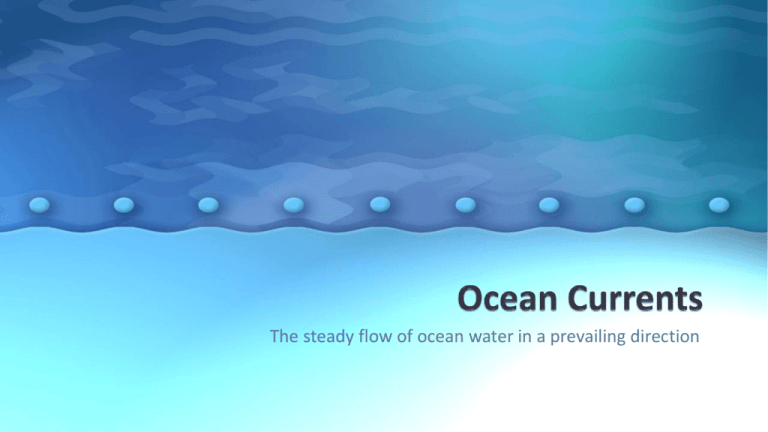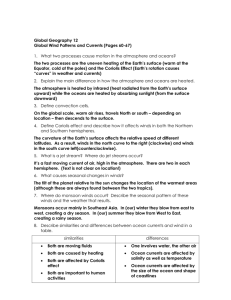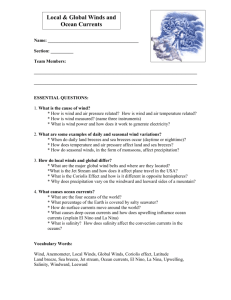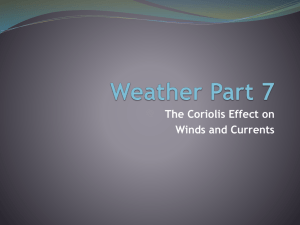Powerpoint on Ocean Currents - Science
advertisement

The steady flow of ocean water in a prevailing direction Ocean Currents Driven by several factors Tides Wind Thermohaline circulation Tidal Currents Occur with the rise and fall of the tides Near the shore Bays Estuaries http://oceanservice.noaa.gov/ Coastal Currents Depend on Winds Waves Land formations Coastal Currents Winds that blow along the shoreline—longshore winds—affect waves and, therefore, currents Longshore currents are generated when a wave train reaches the coastline and release bursts of energy May form rip currents (not rip tides) - a localized current that flows away from the shoreline toward the ocean http://oceanservice.noaa.gov/ Surface Currents Occur on the open ocean Driven by a complex global wind system Surface Currents – Coriolis Effect Due to Earth’s rotation The Earth rotates faster at the Equator than it does at the poles Earth is wider at the Equator; point on the Equator has farther to travel in a day http://www.classzone.com/books/earth_science/terc/content/visualizations/es 1904/es1904page01.cfm http://www2.palomar.edu/users/pdeen/Animations/34_Coriolis.swf Surface Currents – Coriolis Effect Circulating air or wind is deflected by the Coriolis Effect http://oceanservice.noaa.gov/ Surface Currents Global winds drag on the water’s surface Caused movement in the direction that the wind is blowing Results in the deflection of surface ocean currents to the right in the Northern Hemisphere (in a clockwise spiral) and to the left in the Southern Hemisphere (in a counter-clockwise spiral) Called gyres Occur north and south of the equator Not at the equator Coriolis effect is not present










